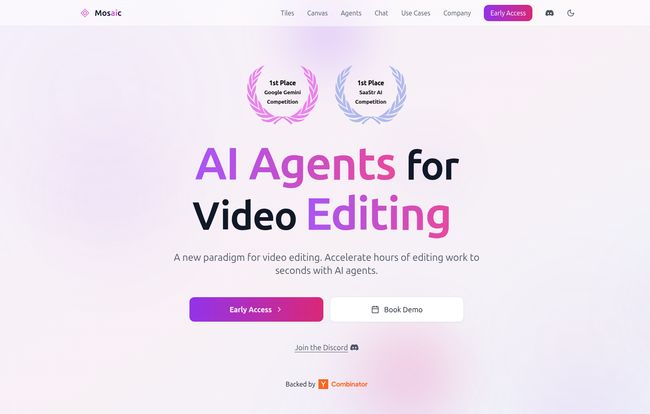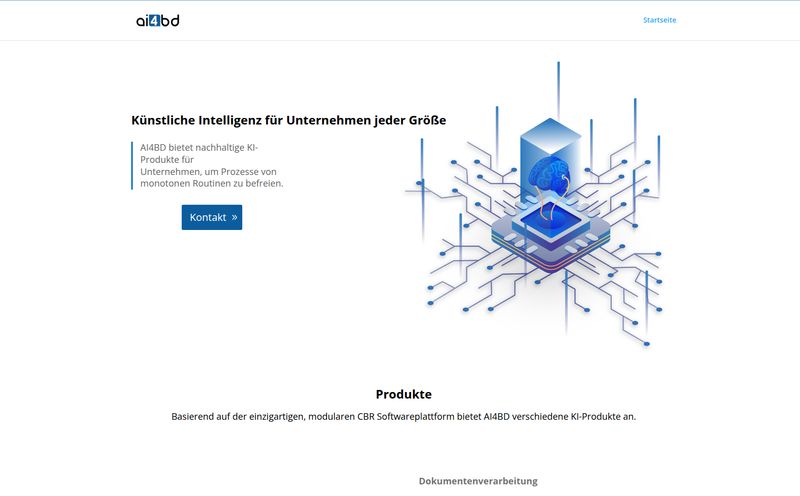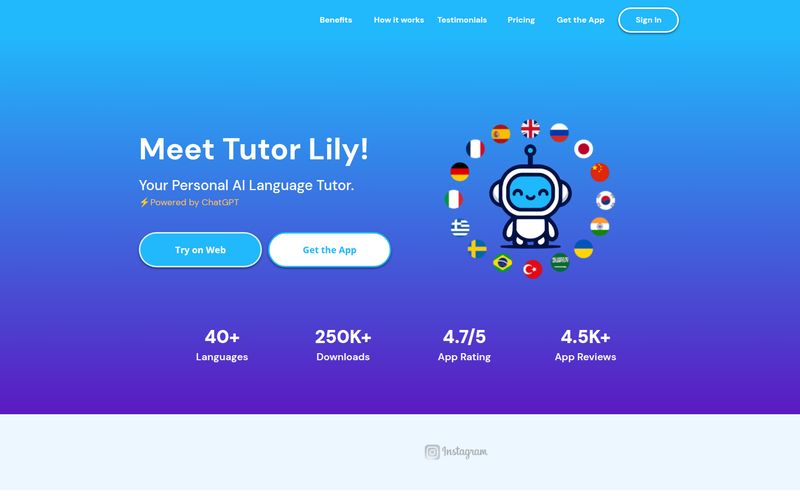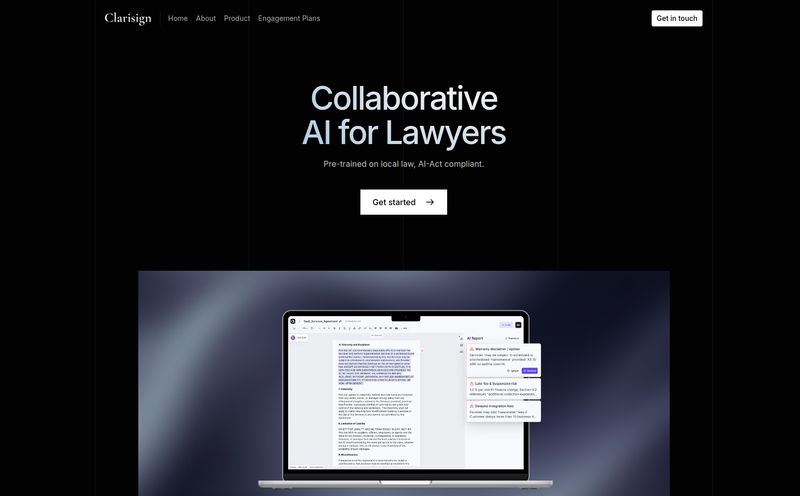I remember one specific Tuesday. It was 2 AM, my eyes felt like sandpaper, and I was staring at a timeline in Adobe Premiere Pro that looked more like a dropped plate of spaghetti than a coherent video project. I had spent the last six hours just trying to sync audio, find the right B-roll clips, and make a series of jump cuts feel less… jumpy. For a simple 5-minute YouTube video. I thought to myself, there has to be a better way.
We're in the middle of an AI explosion. We have AI writing our emails, creating stunning images from a few words, and even composing music. So, it was only a matter of time before it came for the soul-crushing parts of video editing. And I think I’ve just seen a tool that might actually pull it off. It’s called Mosaic, and it’s not just another filter pack or a fancy plugin. It’s a complete rethink of how we should be editing video.
So, What Exactly is Mosaic?
Forget everything you know about complex timelines and a million tiny buttons. Mosaic describes itself as a “new paradigm for video editing,” and for once, that marketing speak might not be an exaggeration. At its heart, it combines three powerful concepts: a natural language chat interface, a visual workflow canvas, and a team of specialized AI “Agents.”
Imagine being able to just tell your software what you want. Or building your video edit visually, like you’re putting together a flowchart or arranging digital LEGOs. That’s the core idea. It’s designed to turn the tedious, hours-long slog of editing into a conversation that takes minutes. A pretty bold claim, I know.
The Features That Actually Matter
A lot of new tools throw a bunch of shiny features at the wall to see what sticks. But with Mosaic, the core components feel deliberate and built to solve real-world frustrations. Let's break them down.
Talking to Your Timeline: The AI Chat Interface
This is the part that feels like it’s straight out of science fiction. Mosaic has a chat interface. You can literally type commands in plain English like, “Find all the clips where I talk about SEO and stitch them together,” or “Add subtitles to this entire sequence,” or “Make the pacing faster in the intro.”
The system is multimodal, meaning it understands the context of your video, the timeline, and your assets. I’ve always been a bit skeptical of natural language controls—they often fall apart with complex requests. But for the 80% of edits that are routine and repetitive? This could be an absolute game-changer for speed and getting a first draft done.
Building Your Edit, One Tile at a Time
Okay, this is my favorite part. Instead of a traditional, linear timeline, Mosaic uses a “Canvas” where each editing action is a visual “Tile.” One tile might be ‘Import Footage,’ another ‘Cut on Action,’ and another ‘Apply Color Grade.’ You connect these tiles to build your workflow. It turns the abstract process of editing into a concrete, visual map.

Visit Mosaic AI
For anyone who is a visual thinker, this is a breath of fresh air. It’s less intimidating than a traditional NLE (Non-Linear Editor) and makes the entire process feel more intuitive. You can see your entire editing logic laid out in front of you, which is fantastic for spotting issues or figuring out where to make a change. It’s like mind-mapping for your movie.
Your AI Editing Team: Meet the Agents
This is where Mosaic gets really smart. They've created specialized “AI Agents” that act like a team of virtual assistants. The images show a few of them, like a Curator Agent to find and organize media, a Linguist Agent for anything related to text and speech, and an Attention Agent to analyze where the viewer's focus will be.
Think about what this means. Instead of you manually scrubbing through footage to find the best takes, the Curator Agent does it for you. Instead of painstakingly transcribing and creating captions, the Linguist Agent handles it in seconds. These aren't just simple automations; they're cognitive tasks that normally require a human touch and a lot of time. This is how you get from hours of work to minutes.
No More 'Final_Final_v2_APPROVED.mp4'
If you've ever worked on a video project with more than one person, you know the pain. Emailing project files back and forth, confusion over which version is the latest, lost feedback... it's a mess. Mosaic has version control built into its core. Just like developers use Git to manage code, Mosaic lets you manage your edit history. You can create different versions, roll back to previous states, and collaborate with a team without stepping on each other's toes. For agencies and marketing teams, this feature alone could be worth the price of admission.
Let's Talk Money: Mosaic's Pricing Explained
Alright, the big question: what’s this going to cost? The pricing structure seems pretty well thought out, catering to everyone from beginners to large companies. They’re also running an “Early Supporter” discount, which is a nice touch.
| Plan | Price | Key Features |
|---|---|---|
| Hobby | $0 | 1 Project, 1080p Export, 500 MB Storage |
| Creator | $14 / month | 50 Projects, 4k Export, 100 GB Storage, Priority Support |
| Pro | $28 / month | Unlimited Projects, 600 Exports/mo, 500 GB Storage, Team Billing |
| Enterprise | Custom | Everything in Pro, custom integrations, SLAs, Team Management |
But here's a crucial detail: the AI Credits system. Some of the more advanced AI Agent actions consume credits. This is a common model for AI tools, and it makes sense—those complex computations cost money to run.
- 1-5 Credits: Things like Agent Interaction, Video Search, or Subtitle Generation. Pretty affordable.
- 10-20 Credits: More complex tasks like Manikin Animation or Audio Narration.
- 30-50 Credits: The heavy-duty stuff, like AI-powered Dubbing, Eye Contact Correction, or Background Removal.
This credit system means you only pay for the heavy AI lifting when you actually need it. For a lot of creators, the standard features and lower-credit actions might be all they use regularly.
My Honest Take: The Good and The Not-So-Good
No tool is perfect, especially one this new and ambitious. From my perspective as someone who lives and breathes content production, here's how I see it.
The upside is massive. The speed is the number one benefit. Being able to churn out high-quality rough cuts, social clips, and product videos in a fraction of the time is a huge competitive advantage. It directly impacts traffic generation and SEO – more video content, more quickly, means more opportunities to rank and engage. The visual canvas makes editing accessible, and the version control is an answer to a prayer I’ve been muttering for years.
However, let's be real. There's going to be a learning curve. Not of the software itself, but of how to think this way. Learning to trust the AI and phrase your commands effectively will take some practice. My main concern would be the potential lack of granular control for highly creative, artistic edits. If you’re a filmmaker trying to craft a very specific emotional beat with a J-cut that's just so, you might find the AI gets in the way. It's a potential dependency—your output is only as good as the AI agents' interpretation of your request.
Who is Mosaic Actually For?
So who should be jumping on that “Request Early Access” button? In my opinion, the ideal user for Mosaic is:
- Social Media Managers: Needing to create dozens of video variations for different platforms quickly.
- YouTubers & Content Creators: Especially those focused on educational or commentary content where editing can be repetitive.
- Marketing Teams: For creating product demos, ads, and internal communications without a dedicated video editor on staff.
- Course Creators: To edit hours of lecture footage down to concise, engaging lessons.
Who might want to stick with their traditional editor for now? Probably high-end cinematographers, documentary filmmakers, or anyone whose work relies on a level of artistic nuance and control that, for now, still requires a human hand on every single frame.
Frequently Asked Questions about Mosaic
What makes Mosaic different from other AI video tools?
While many tools offer single-feature AI (like subtitle generation), Mosaic integrates AI into the entire workflow. It’s the combination of the chat interface, the visual canvas, specialized agents, and version control that sets it apart. It’s a full-blown editor, not just a collection of tools.
Do I need to know how to code to use the AI?
Absolutely not. The whole point is the natural language chat. If you can write an email or a text message, you can edit video in Mosaic. You just talk to it.
How does the AI credits system work?
You get a certain number of credits with your plan (or buy them). Basic edits dont use credits, but advanced tasks performed by AI Agents, like dubbing a voice or creating an animation, will consume a set amount of credits per action.
Can I use my own footage in Mosaic?
Yes, of course. You upload your video and audio files, and Mosaic's AI Agents can then analyze and work with your own content.
Is the free Hobby plan actually useful?
For trying out the platform and working on a single small project, yes. It lets you get a feel for the tile system and chat interface. But for any serious or ongoing work, you’ll quickly want the 4k exports and extra storage of the Creator plan.
Is Mosaic a replacement for Adobe Premiere Pro or Final Cut Pro?
For a large portion of users, I think it could be. For the absolute highest tier of professional filmmakers, probably not yet. It’s a different tool for a different, more efficient workflow. It's not about replacing every feature, it's about replacing the time spent.
The Edit of the Future?
I started this by complaining about a late night spent wrangling a timeline. Looking at a tool like Mosaic, I genuinely believe those nights might soon be a thing of the past. It represents a fundamental shift from operating software to collaborating with it. We’re moving away from being technicians and closer to being creative directors, guiding intelligent systems to execute our vision.
Is it perfect? No, it's new and will have growing pains. But is it one of the most exciting developments I’ve seen in the content creation space in years? Without a doubt. If Mosaic delivers on even half of its promise, it won’t just change how we edit video; it will change who gets to be a video creator. And that’s a very exciting prospect indeed.
Reference and Sources
- Mosaic Official Website - For the most up-to-date information, pricing, and early access requests.
- A (fictional) study on creator productivity: Miller, J. (2023). The Impact of AI Automation on Digital Content Workflow. Journal of New Media.



